There have been nine Spider-Man movies since 2002: but which Spider-Man movie is best? Marvel’s web-slinger is one of the most popular movie properties today, but it took a long time for Hollywood to realize how lucrative he could be. Until relatively recently, the wall-crawler had only ever journeyed to the small screen. He was the star of several series and TV films starring Nicholas Hammond, along with various acclaimed cartoons, such as the Spider-Man: The Animated Series. Although that isn’t to say that no one was trying to bring Spider-Man to the big screen.
In the 1980s and 1990s, directors Tobe Hooper and James Cameron were thwarted by failing production companies – and the fact that Spider-Man’s movie rights frequently changed hands. After numerous lawsuits and hotly contested debates, MGM gave Columbia Pictures the rights to Spider-Man, in exchange for James Bond’s license. Director Sam Raimi was hired, and between 2002 and 2007, he produced the highly influential Spider-Man Trilogy. This ended when Raimi and Sony parted ways due to scheduling issues and creative differences later in the decade. In 2012, Sony rebooted the character in Marc Webb’s divisive duology, in which Andrew Garfield replaced Tobey Maguire as the lead superhero. Yet, Garfield and Webb were soon dropped in 2015 when Sony and Marvel Studios joined forces. The franchise was refreshed yet again in 2017, this time with Jon Watts in the director’s chair overseeing Tom Holland’s movie version.
Today, the future looks bright for Spider-Man’s silver screen adventures. Watt’s latest installment, No Way Home, has delighted critics and fans, and Sony is continuing to develop two separate franchises: one focusing on Spider-Man’s villains, and the other charting various alternate Spider-people in animated form. Soon, Spider-Man will have starred in more films than his fellow superhero icons Superman and Batman. But as this rocky production history suggests, each of his cinematic exploits has arrived with varying degrees of success. From his pizza-delivering days to his inter-dimensional battles, let’s look back on all of Spider-Man’s big-screen adventures and rank them all, from worst to best.
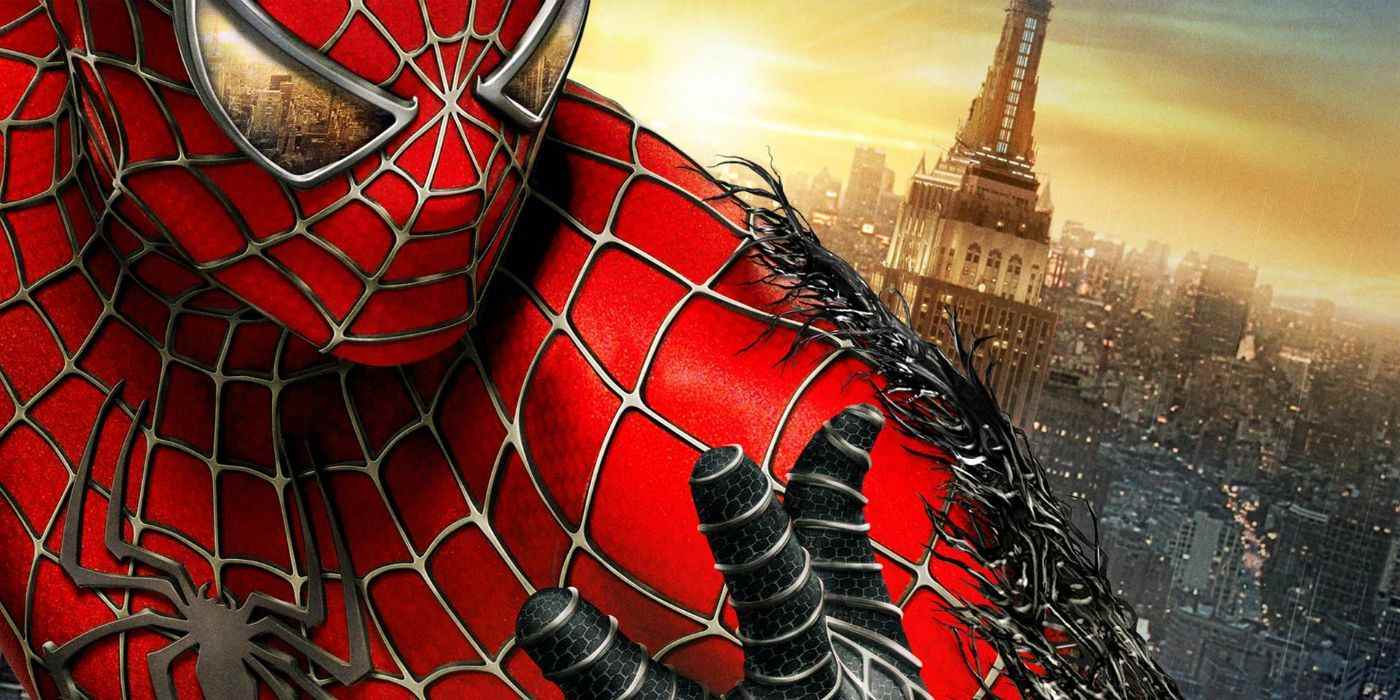
Still mocked over ten years later, Sam Raimi’s Spider-Man 3 is still the weakest of the Spidey lot. Set a year after Spider-Man 2, the situation looks very positive for Tobey Maguire’s Peter Parker. He has finally balanced his superhero duties alongside his career, and he plans to propose to his girlfriend, Mary Jane Watson (Kirsten Dunst). But this harmony is soon shattered by the threat of the New Goblin (James Franco), the Sandman (Thomas Haden Church), and a certain black symbiote from outer space.
Like Alien 3 and X-Men: The Last Stand, Spider-Man 3 has a bad reputation for finishing a popular film series with a whimper instead of a bang. But emo street-dancing aside, it’s safe to say that Spider-Man 3 isn’t as bad as its lingering notoriety would suggest. Peter’s airborne fight with the New Goblin and his subway tussle with Sandman are still thrilling affairs. And speaking of Spider-Man villain Sandman, the character is the star of the movie’s standout scene; the moment when his disintegrating hands cannot hold his daughter’s pendant is heartbreaking, thanks to an affecting combination of detailed CGI and a touching score.
It’s a shame that this deftness is rarely seen elsewhere in the film. Spider-Man 3 is filled with many subplots and misunderstandings, and, buckling under their weight, it plods from one sequence to the next. When Mary Jane is kidnapped for the third time in the series, the movie’s tiredness is palpable, and a lot of this is due to the inclusion of one character: Venom. Sam Raimi famously disliked this villain, but Sony and producer Avi Arad pushed for his inclusion. As a result, Venom – and the symbiote arc at large – feels very undeveloped, as does Bryce Dallas Howard and James Cromwell’s Gwen and George Stacy respectively. Raimi’s dissatisfaction is evident throughout Spider-Man 3. While the film is not the crime against cinema that it has often been portrayed as, it remains a dark and disappointing stain on Spider-Man’s filmic past.

The Amazing Spider-Man 2 was released seven years after Spider-Man 3. Despite this time difference – and the backlash that Raimi’s movie received – it repeated many of Spider-Man 3‘s failings. Marc Webb’s second attempt at adapting Spider-Man sees Andrew Garfield’s wall-crawler wrangle with Electro (Jamie Foxx), the darkness spreading from Oscorp and Harry Osborn (Dane DeHaan), along with the mystery of his parents’ death, while trying to repair his troubled relationship with Gwen Stacy (Emma Stone). It’s a busy movie for sure.
In their attempts to copy The Avengers’ huge success, Sony pivoted from copying The Dark Knight’s grounded approach in Webb’s first The Amazing Spider-Man movie to mimicking Marvel Studios’ breezier, jokier output in the Spidey sequel. On top of this, they tried to set up a shared universe of their own. While the new tone actually benefits this historically light-hearted character, the abundance of plots and ideas did not. Sony was clearly setting up the next installment, as well as a Sinister Six movie, but both derail The Amazing Spider-Man 2‘s story, and it is all the more frustrating that both of these planned films never arrived.
However, there is still enjoyment to be had in The Amazing Spider-Man 2. Spider-Man’s opening chase is exhilarating, as is his confrontation with Electro in Times Square. But the keys to this film are Andrew Garfield and Emma Stone. The two actors were dating while making this movie and the result is the kind of easy, authentic chemistry that many other films have failed to generate. As as result, Gwen Stacey’s heart-breaking death in The Amazing Spider-Man 2 is one of the best-acted, most affecting scenes in the history of superhero movies.
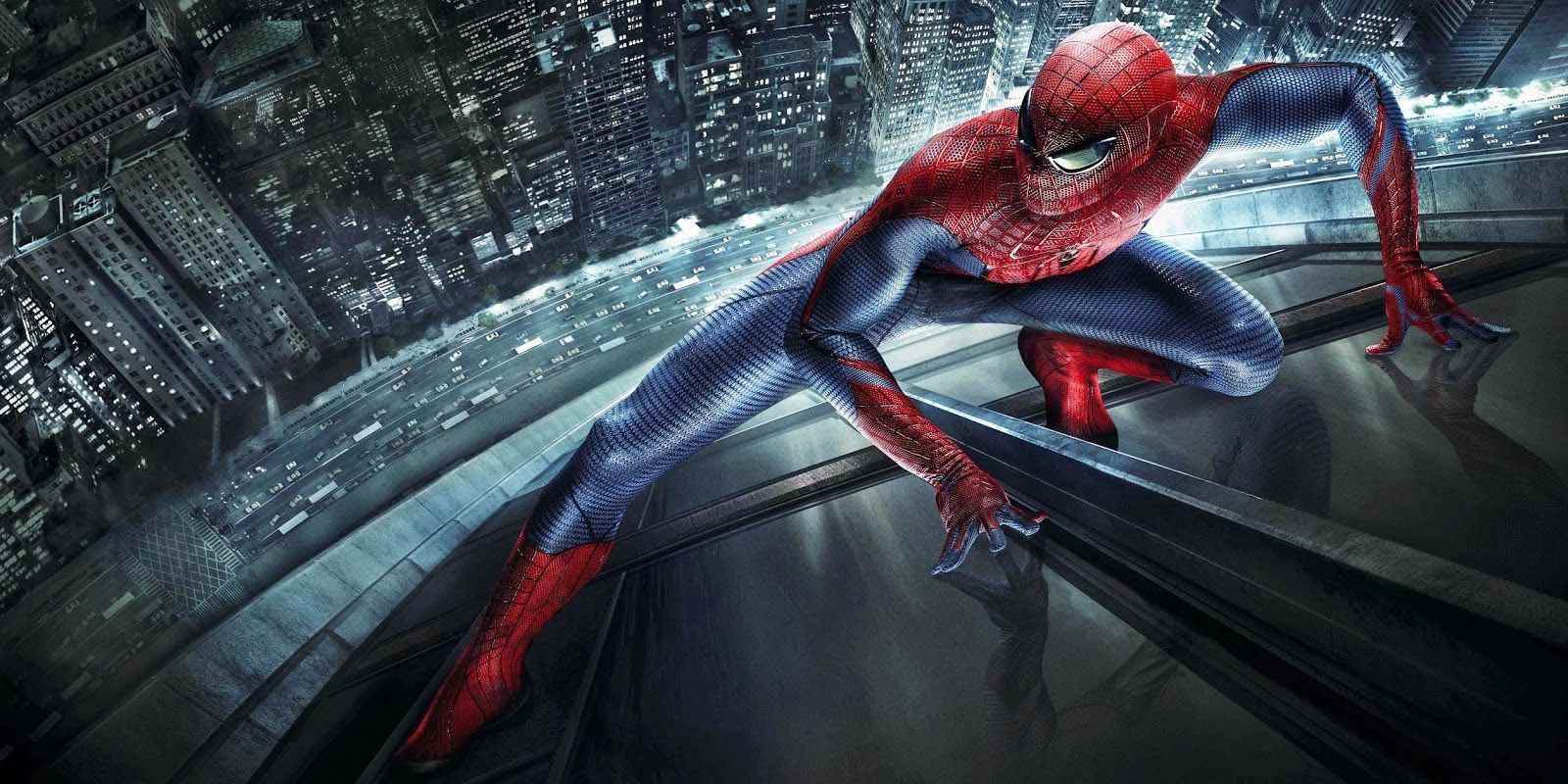
Despite not being as warmly received as its predecessors, Spider-Man 3 made so much money that plans for two more sequels began in earnest. The original cast was set to return, along with director Sam Raimi, who was disappointed in how Spider-Man 3 had turned out and planned to restore the series’ glory. Yet in 2010, Raimi departed the project, saying that he couldn’t produce a quality film within Sony’s strict production schedule. Spider-Man 4′s leading man and lady departing in solidarity with Raimi. As such, Sony moved forward with a rebooted franchise, now with director Marc Webb, Andrew Garfield as Spider-Man, and the added prefix of “amazing.”
Webb’s new take on Spider-Man’s mythos initially promised to tell the untold story of Peter Parker’s absent parents, yet it mostly just remixes Spidey’s origins. The bullied, nerdy Peter is re-imagined as an awkward loner, and Mary Jane Watson and the Green Goblin are exchanged for Gwen Stacy (Emma Stone) and the Lizard (Rhys Ifans) respectively. Indeed, there’s a constant conflict between old and new within the film. Webb and co. clearly want to try something different, but they’re constrained by the comics (not to mention that Raimi’s original movie already told Spidey’s story very successfully).
The Amazing Spider-Man tries to embellish these familiar story beats, but the film often feels unfocused when it does. The power of Uncle Ben’s death is diluted because of the changes made to its surrounding plot. Similarly, Peter’s prolonged search for Ben’s murderer isn’t a bad idea. However, in the context of the film, this amendment hampers Peter’s arc. His transition from being a cocky kid with powers into a fully-fledged superhero isn’t as defined as it should be.
Still, The Amazing Spider-Man is overall a fairly solid outing for the wall-crawler. The late James Horner’s beautiful score elevates every action sequence, and the new cast performs admirably – particularly Martin Sheen, who looks and sound exactly as Uncle Ben should. Marc Webb’s edgier adaptation would have been received far more warmly if it had arrived later than it did – as would Andrew Garfield’s Spider-Man.

Even though the world is pressuring Spider-Man to step up as its premier hero, Peter Parker desires the opposite. After Spidey was disintegrated by Thanos (Josh Brolin) in Avengers: Infinity War and lost his beloved mentor shortly after he was resurrected in Avengers: Endgame, Peter craves nothing but a relaxing summer vacation with his classmates in Europe. But super-spy Nick Fury (Samuel L. Jackson) has other ideas. A new and dangerous threat has emerged, and to combat it, Fury must pair the reluctant superhero with the enigmatic Mysterio (Jake Gyllenhaal).
It does take director Jon Watts some time to find his groove late in Spider-Man: Far From Home’s first act, but his increasingly confident direction spawns slicker, more spectacular action sequences and compelling character moments that often rival its predecessor. Moreover, the film boasts some of the finest and most psychedelic visuals to exist (thus far) in the MCU – courtesy of Far From Home‘s marvelous Mysterio. Die-hard fans may have guessed Mysterio’s twist prior to his explanatory monologue, yet this doesn’t undermine Gyllenhaal’s brilliant performance or the fact that he brings forth one of the meatiest socio-political commentaries contained in a Spider-Man – or Marvel – movie yet.
However, Far From Home has to work hard to reorient Spidey’s world post-Endgame and establish his nation-hopping exploits abroad, with spies, Skrulls and the possibility of the multiverse to boot. Removed from familiar settings and containing numerous MCU ties, the film often doesn’t feel like Spider-Man is the focus of his own adventure. And the inclusion of E.D.I.T.H in Far From Home leaves something of a sour taste, starkly contrasting with what has been established – in terms of both Spider-Man’s morality and the wider world that he inhabits.
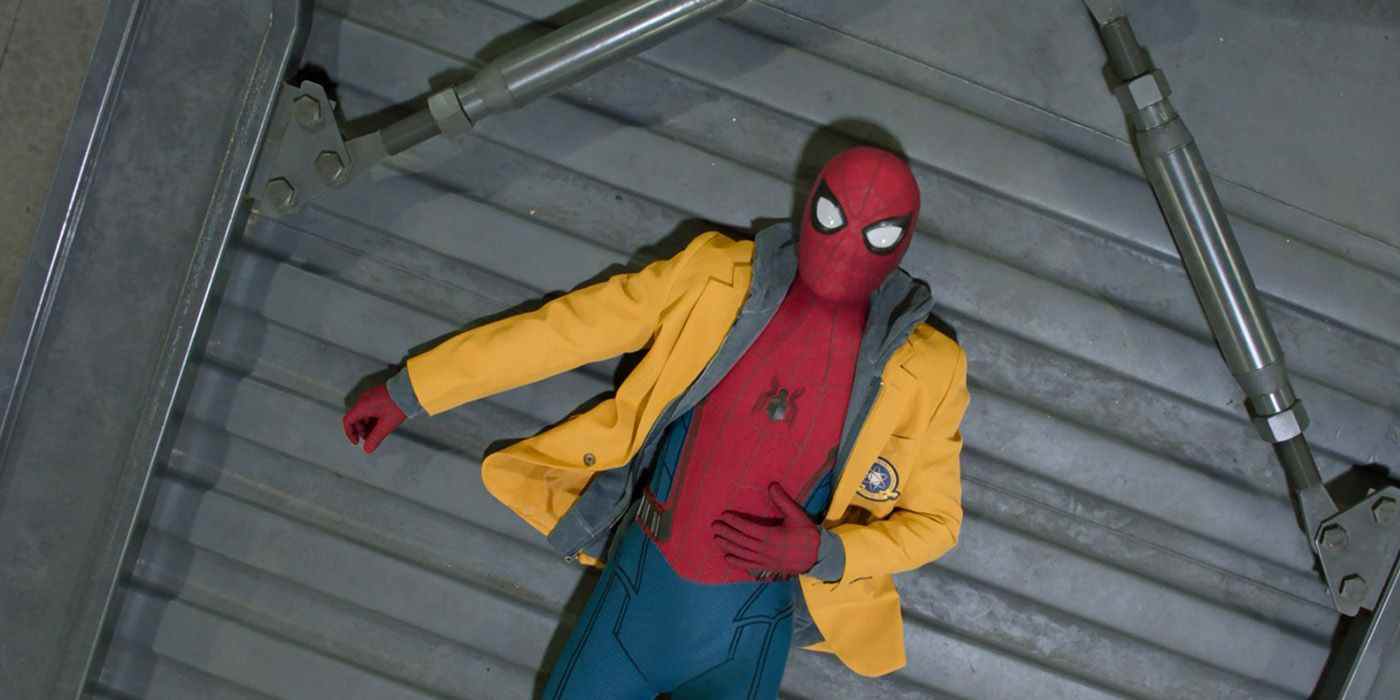
The Amazing Spider-Man 2’s disappointing reception prompted Sony to rethink their shared universe strategy. In the end, Sony partnered with Marvel Studios to share Spider-Man. Sony still retains the characters’ films rights and produces every new film, but Marvel creatively dictates Spidey’s franchise and can use him in their own movies.
In the MCU, a world of superhero teams and alien invasions, Tom Holland’s Peter Parker wants to leave his high school behind, especially after his experiences during Captain America: Civil War. Iron Man (Robert Downey Jr.) rebuffs Peter due to his age and inexperience, but when the villainous Vulture starts selling dangerous weaponry in Peter’s neighborhood, the fledgling hero sees an opportunity to do some good – and make a name for himself.
Though Peter Parker had already appeared in Civil War, Spider-Man: Homecoming stood as a new rebirth for the franchise, which meant that there were quite a few changes made to his mythos. For example, Uncle Ben’s death is only alluded to, and Spidey now utilizes a hi-tech costume. This re-configuring did not sit well with some die-hard fans, yet it’s completely understandable why Sony and Marvel made these changes. Indeed, it’s hard to deny that the majority of these changes to the youthful hero worked to great effect.
For Spider-Man: Homecoming, Jon Watts took notes from teen comedies of the 1980s, and the result is a tone and pacing that is utterly suitable for Spider-Man. Sprightly and savvy, the teenage Peter Parker in Homecoming captures the humor — and the rebellious spirit — of Spider-Man in a way that few adaptations have been able to. The film is assisted, in no small way, by Tom Holland’s tremendous talents, along with Michael Keaton, who makes for a formidable foe. Lending the film a chilling gravitas, Keaton’s tense car ride with Holland in Homecoming’s third act is undoubtedly one of the finest confrontations that the genre has to offer.
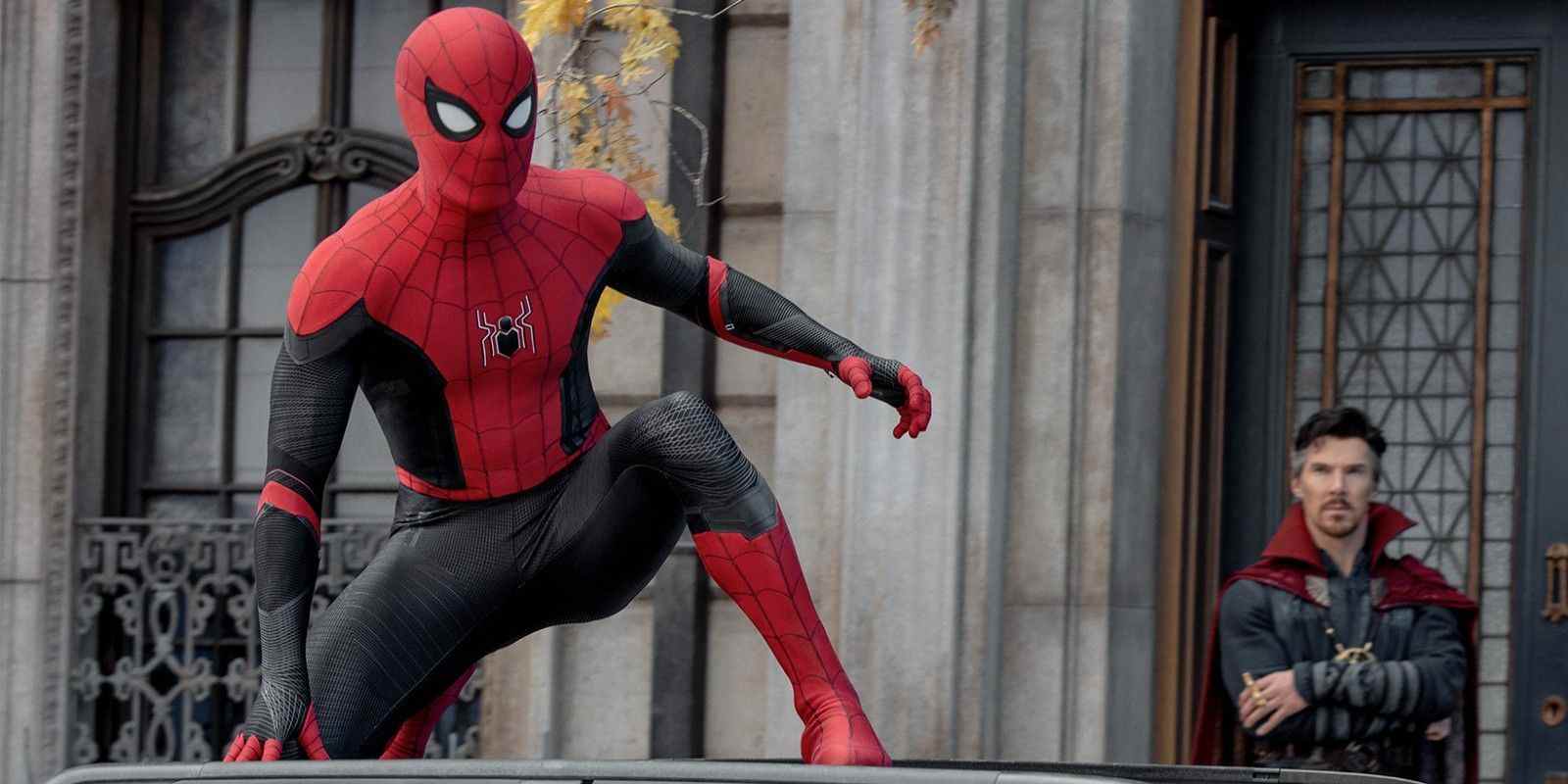
In the wake of Far From Home’s shocking post-credit scene, Peter’s life has never been more stressful – or under such scrutiny. Disheartened by the impact that his double life has had upon his loved ones, and desperate to regain some semblance of privacy and control, Peter seeks out Doctor Strange (Benedict Cumberbatch) for a magical remedy. But when Peter’s indecision inadvertently causes a mystical misfire, the multiverse is opened, and Spidey gets a whole lot more than he bargained for.
The first thing to say about No Way Home is that it is certainly the biggest Spider-Man movie in terms of its scale and ambition. But to quote the titular wall-crawler himself, this is both a blessing and curse. Between Peter’s home life and the various Spider-Man villains, the earlier parts of No Way Home spend a lot of time working to get numerous, disparate parts in position. Sometimes it’s successful, sometimes it’s decidedly clunky. This is also the case with some the clumsy CGI (looking at you, Lizard) and even the awkward staging of some of the conversations. Several characters are regretfully side-lined for prolonged stretches, and there are a couple of subplots and interactions which need more air to breathe – as will many fans, who will be gobsmacked by what unfolds.
Moreover, No Way Home is so infectiously gleeful at what it is doing that many viewers will be able to forgive its shortcomings. The enthusiasm that Watts and company have for Spider-Man is fully on display, and they are clearly wise to various criticisms regarding both their series and Marvel’s output at large. No Way Home‘s Easter eggs and Marvel references only add to this celebratory tone. Aside from the odd slip-up, No Way Home readily tackles the MCU’s famous pathos/bathos imbalance; the grief and sacrifice that define Peter Parker come to the fore, allowing Tom Holland and his castmates to shine even brighter.
Indeed, No Way Home contains plenty of welcome developments that will be talked about by Spidey-aficionados for some time – though its MCU trappings and intense focus on Spider-Man’s previous movies mean it will neither convince nor welcome the uninitiated as Spider-Man: Into the Spider-Verse does. But whether viewers see it as a calculated, corporate cash-in or an earnest celebration of a beloved character, No Way Home will, in spite of its messiness, likely please them in some shape or form.

After Blade and X-Men began to bring superheroes to wider recognition, Sam Raimi’s Spider-Man arrived and cemented their place in pop culture. The very first Spider-Man live-action movie in the timeline set the bar for later entries. The film swiftly broke records, became the biggest movie of 2002, and has been named one of the most revered superhero movies of all time. It may now be almost two decades old, but it’s still clear these successes – and the adulation that Spider-Man continues to receive – are well-deserved. From Peter’s first web swing to that infamous upside-down kiss, Sam Raimi’s affection for the character is apparent throughout the film. It’s such an earnest and thorough telling of Spidey’s origins that, as already mentioned, Marc Webb struggled to diversify his take on the tale, and Jon Watts decided to avoid comparisons and skip past the story altogether.
Furthermore, Spider-Man also gifted J.K. Simmons’ J. Jonah Jameson to the world. Irate and constantly heckling, Simmons’ casting has been unanimously referred to as a perfect hiring, one of the best in the genre’s history. Moreover, it’s very telling how Webb and Watts’ Spider-Man movies avoided recasting Jameson. In the same way, Tobey Maguire is still praised for his shy and endearing take on the character, even if many fans decry his lack of one-liners (this is a criticism that has grown in recent years, especially since many subsequent adaptations have doubled down on Spidey’s wit).
Despite Spider-Man’s light touches of humor, the film is not afraid to go to some dark places. The way in which the Green Goblin attacks Aunt May is very unnerving, as is his assault on Spider-Man in the third act. The latter is particularly bloody for a superhero movie, and may turn off younger viewers. Still, it’s hard to deny just how important this movie is, and just how rousing it can be, especially during Spider-Man’s finale where Danny Elfman’s soundtrack simply makes that end sequence soar. It’s a dated, but simultaneously timeless, masterpiece.
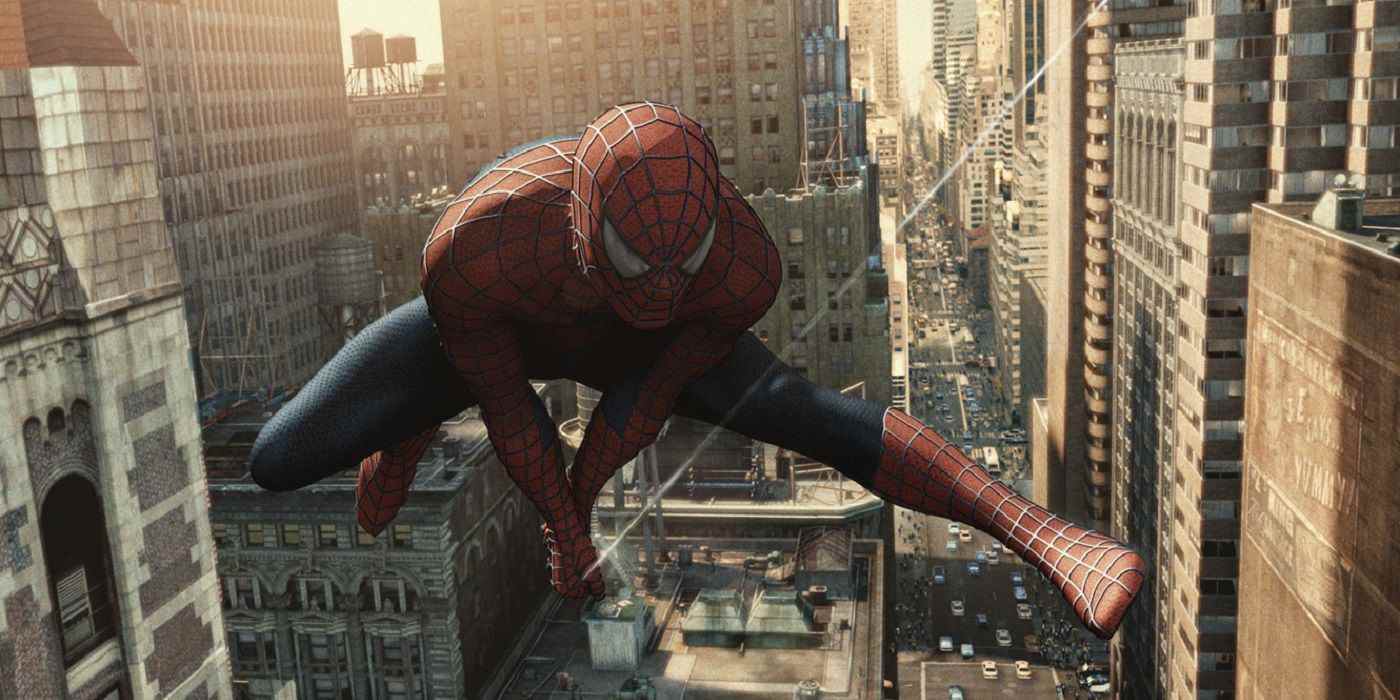
Spider-Man 2 isn’t just one of the best Spider-Man movies — it’s also one of the greatest superhero movies of all time. Moreover, the fact that director Sam Raimi managed to improve upon Spider-Man is no mean feat either. Two years after the death of Uncle Ben (Cliff Robertson) and Peter Parker (Tobey Maguire) has kept his vow to fight crime. New York may be safer, but his personal life is in tatters. He’s struggling in college, verging on bankruptcy, and is forced to watch as Mary Jane (Kirsten Dunst) prepares to marry another man. And the situation goes from bad to worse when Peter’s new mentor, Otto Octavius, becomes Doctor Octopus.
There’s little to say about Spider-Man 2 that hasn’t already been said. Even so, it’s remarkable that the film gets so much that’s right about the character. Tobey Maguire is at his best in the role, and he capably encapsulates Peter’s heartache, his torment, and his humor. Raimi’s Peter may not be the motor-mouth of the comics, but Maguire gets more opportunities to sass people than he did in the first film. He also sells many of Peter’s pratfalls – and spells of bad luck – with perfect comic timing.
Opposite him is Alfred Molina as Octavius. Though he’s a far more maniacal figure in the comics, Molina delivers such a layered and sympathetic rendering of Doctor Octopus that he is frequently named as one of the best ever superhero movie villains. Certainly, in the shared tragedies of Peter and Otto, Spider-Man 2 serves as a brilliant study about the pitfalls of power, and the sacrifices that come with superheroism. It doesn’t hurt that it’s also spectacular to watch. The infamous train fight remains a whirlwind of action, and one of the finest display of Spider-Man’s powers onscreen. And if the theatrical cut is outstanding, the release of Spider-Man 2.1 only enhances that experience, especially with the now-classic scene of J.K. Simmons’ Jameson prancing about in Spider-Man’s discarded costume.
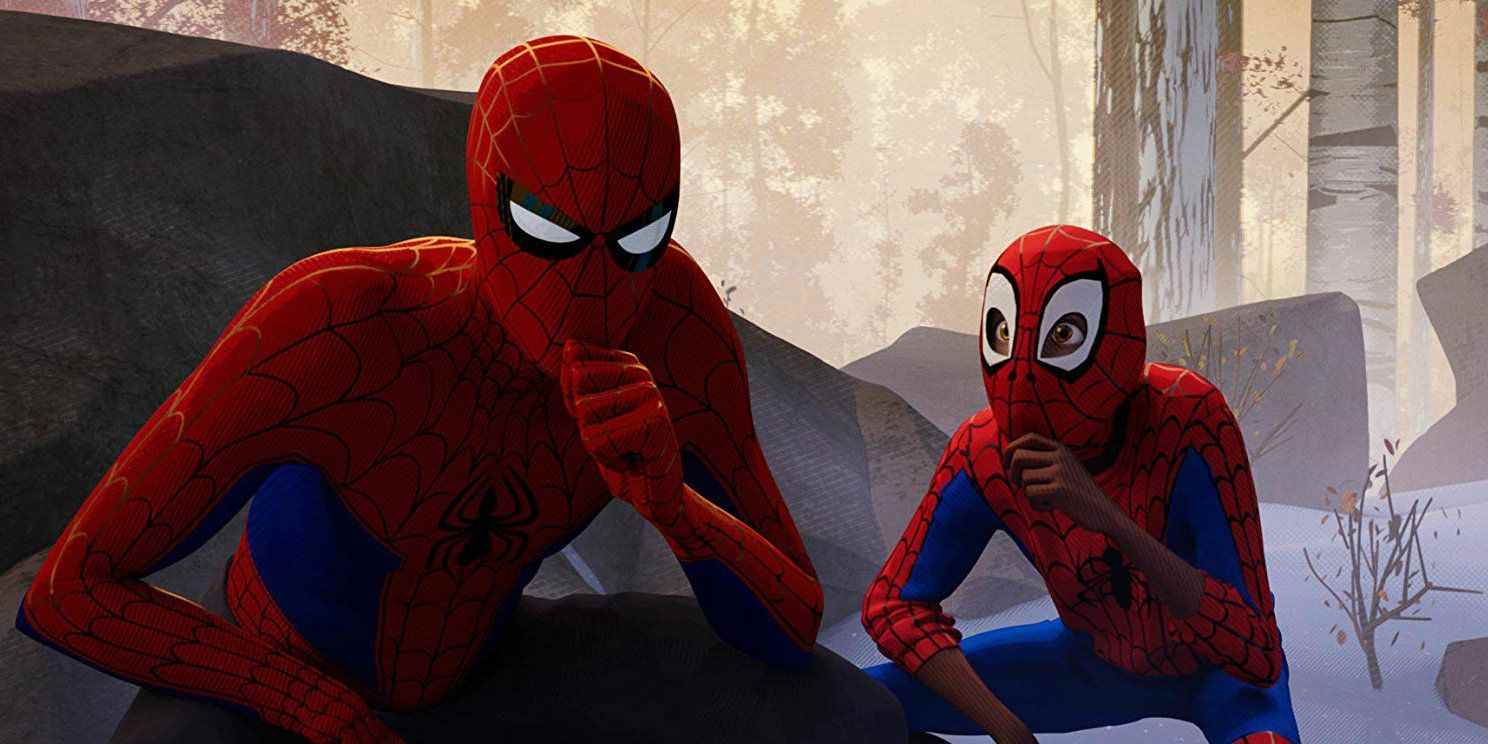
It may be one of the most recent entries on this list, but it’s already clear that Spider-Man: Into the Spider-Verse is one of the all-time greats. As the ever-growing comic book movie genre diversifies, the risk of superhero fatigue eventually setting in looms large; there are only so many times that audiences will want to watch characters receive their powers and save the day, after all. Yet, by delving into the previously untapped potential of alternate realities, Sony defied the odds. Directors Bob Persichetti, Peter Ramsey and Rodney Rothman have produced a poignant and innovative movie that is reinvigorating Spider-Man, and the rest of his fellow caped crusaders.
Into the Spider-Verse follows Brooklyn teenager Miles Morales (Shameik Moore), who lives in a world where Spider-Man has been operating for some time. However, things soon change when he reluctantly receives the same wall-crawling powers as Peter Parker. With the Kingpin (Liev Schreiber) dabbling in various dimensions – and threatening all of reality in the process – Miles must join forces with several alternate Spider-People to save the multiverse.
Writers Phil Lord and Rodney Rothman craft a film that’s very aware of Spider-Man’s place in pop culture, from his usage in memes and merchandise to his status as a titan of comic books. Into the Spider-Verse probes every part of Spider-Man’s legacy, but the film’s metatextuality never feels smug, and nor does it lose sight of what makes Spidey such a special character for so many people. His core ethos of power and responsibility are re-examined not just as Peter Parker’s (Jake Johnson) motto, but a code for everyone to access. In short, anyone can be Spider-Man.
But Into the Spider-Verse isn’t just a heartfelt love letter to the wall-crawling hero – it’s also the funniest and most endearing Spider-Man movie yet. All of its thrilling chases and fights are packed with quips and jokey asides, and its attention to detail is frankly astounding. With every frame of Into the Spider-Verse hiding a secret reference, and all of its characters rendered in different animation styles to reflect their home universes, the Spider-Man movie brings comic book worlds to life like never before. It simply fizzes with an unbridled energy, warmth and wit that’s unlike any other aforementioned Spider-Man film. Because it is predominately Miles and Peter’s story, audiences may not get to spend as much time with Peni Parker (Kimiko Glenn) or Spider-Man Noir (Nicholas Cage) as much they’d like to, but given that Into the Spider-Verse will soon be the start of a trilogy, it seems very likely that their short screen-times will be rectified in the two upcoming movies. Time will ultimately reveal its legacy, but even at this stage its clear that Spider-Man: Into the Spider-Verse is one of the best animated films – and superhero movies – ever made.
